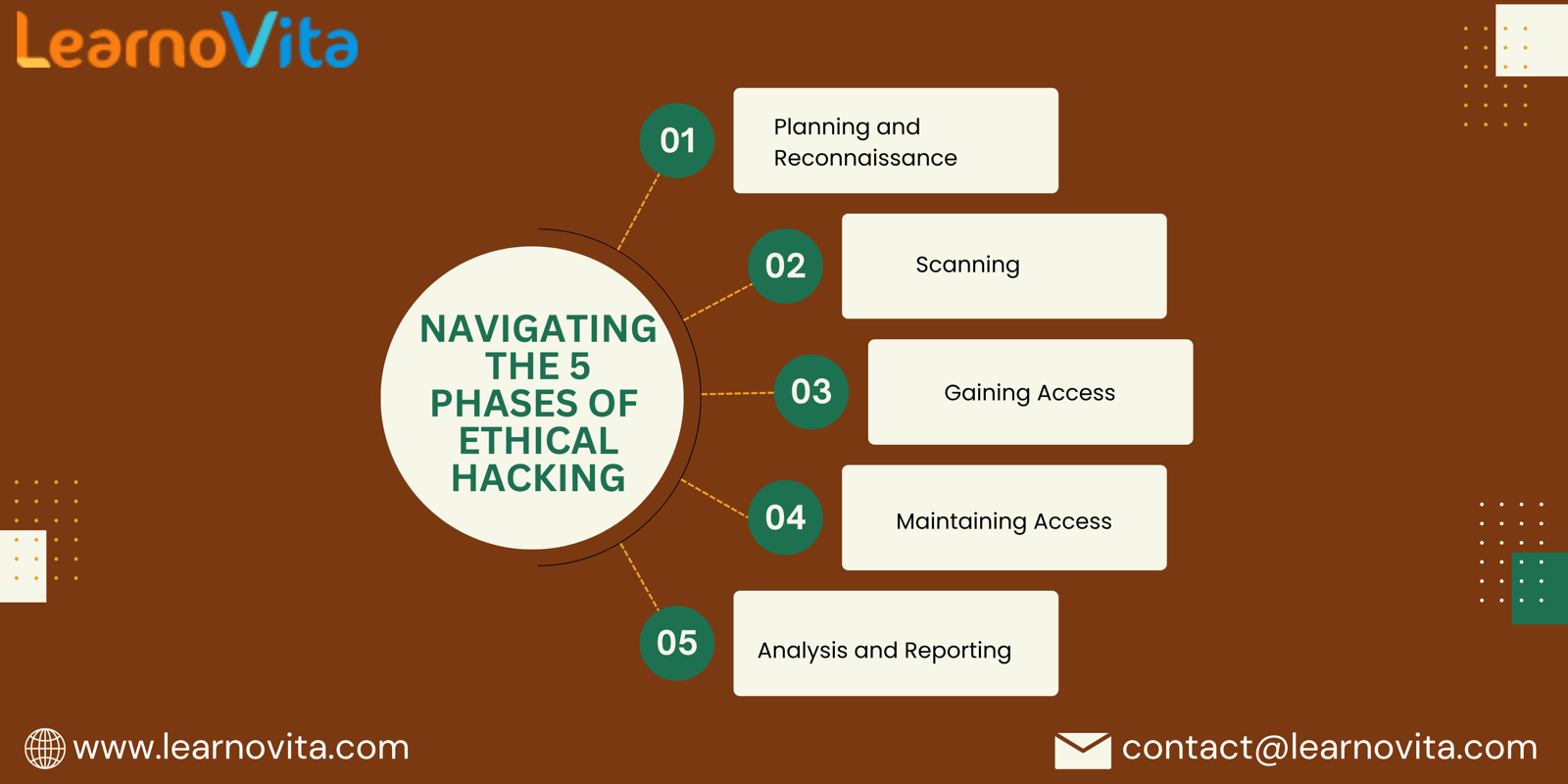Breaking Down the Five Phases of Ethical Hacking
In our increasingly interconnected world, the importance of cybersecurity cannot be overstated. Ethical hacking, often dubbed penetration testing, is a proactive strategy that helps organizations identify and address vulnerabilities before malicious actors can exploit them. This blog will break down the five essential phases of ethical hacking, shedding light on how each step contributes to a more secure digital environment.
If you want to excel in this career path, then it is recommended that you upgrade your skills and knowledge regularly with the latest Ethical Hacking Course in Bangalore.

1. Planning and Reconnaissance
The first phase is all about preparation and information gathering. This stage lays the groundwork for the entire ethical hacking process and can be divided into two parts:
-
Passive Reconnaissance: Ethical hackers gather information from publicly available resources such as websites, social media, and domain registrations. This method does not involve direct interaction with the target, reducing the risk of detection.
-
Active Reconnaissance: In this more hands-on approach, ethical hackers engage directly with the target’s systems to discover live hosts, open ports, and running services. Techniques like network scanning and ping sweeps are common in this phase.
The aim is to create a detailed profile of the target, identifying potential weaknesses.
2. Scanning
Once the reconnaissance phase is complete, the next step is scanning. This phase involves using various tools to analyze the target’s systems and networks. Key activities include:
-
Network Scanning: Identifying all active devices on the network to understand the layout.
-
Port Scanning: Determining which ports are open and what services are running on those ports.
-
Vulnerability Scanning: Utilizing automated tools to pinpoint known vulnerabilities in the systems.
This phase is crucial for identifying specific weaknesses that could be exploited in later stages.
3. Gaining Access
With a clear understanding of the target's vulnerabilities, ethical hackers move to the gaining access phase. This stage involves exploiting identified weaknesses to gain unauthorized access to the system. Techniques may include:
-
Exploiting Vulnerabilities: Actively launching attacks against specific software or hardware flaws.
-
Social Engineering: Using psychological manipulation to trick individuals into disclosing sensitive information, such as passwords.
The goal is to demonstrate how an attacker could breach the system and access confidential data.
With the aid of Ethical Hacking Online Training programs, which offer comprehensive training and job placement support to anyone looking to develop their talents, it’s easier to learn this tool and advance your career.

4. Maintaining Access
Once access is gained, the focus shifts to maintaining that access. This phase is essential for understanding how long an attacker could remain undetected within a system. Key activities include:
-
Creating Backdoors: Installing tools that allow continued access to the system, even if the initial vulnerabilities are patched.
-
Privilege Escalation: Seeking higher levels of access to control more critical areas of the system.
This stage highlights the risks associated with undetected breaches and underscores the importance of continuous security monitoring.
5. Analysis and Reporting
The final phase involves compiling the findings into a comprehensive report that outlines vulnerabilities and provides actionable insights. This report typically includes:
-
Summary of Findings: A detailed overview of all vulnerabilities discovered during the assessment.
-
Recommendations: Suggested remediation strategies to address the identified issues.
-
Risk Assessment: Evaluating the potential impact of each vulnerability on the organization.
This phase is crucial for enabling organizations to understand their security posture and implement necessary changes to enhance their defenses.
Conclusion
Ethical hacking is an essential practice in the fight against cyber threats. By breaking down the five phases—planning and reconnaissance, scanning, gaining access, maintaining access, and analysis and reporting—organizations can effectively identify and mitigate vulnerabilities. Embracing ethical hacking not only protects sensitive information but also strengthens overall security, making it a vital component of a robust cybersecurity strategy. Investing in ethical hacking is not just a precaution; it’s a proactive measure to ensure a safer digital future.
- Art
- Causes
- Crafts
- Dance
- Drinks
- Film
- Fitness
- Food
- الألعاب
- Gardening
- Health
- الرئيسية
- Literature
- Music
- Networking
- أخرى
- Party
- Religion
- Shopping
- Sports
- Theater
- Wellness



